Costa Rica
Wildlife and Nature
Photo Tour
Dates: TBA
Cost $ TBA
(Single Rooming Supplement $613.00)
Please contact our office ASAP!
Limited to 8 Participants
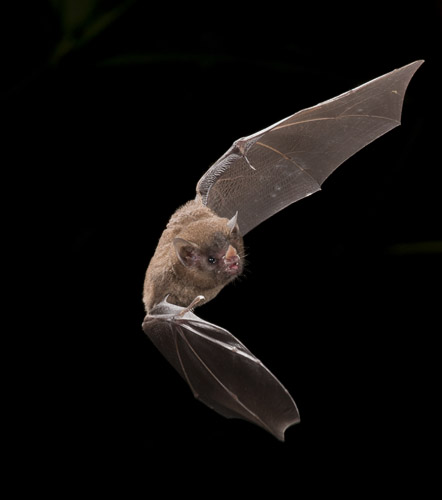
Pallas's long-tonued bat
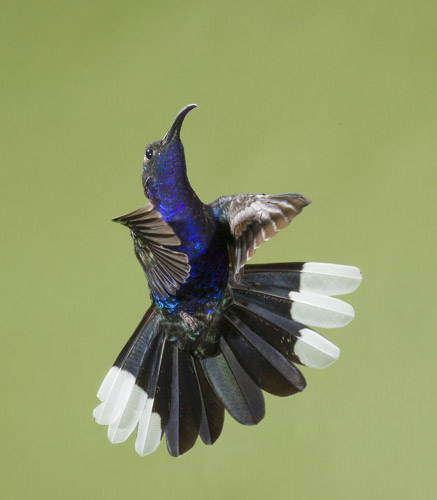
Violet Sabre-wing
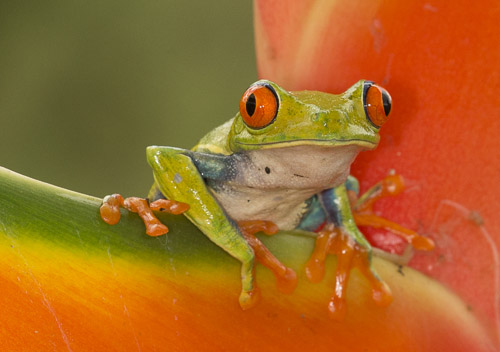
Red-eyed Treefrog
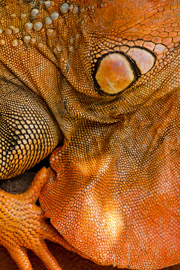
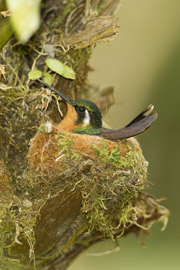
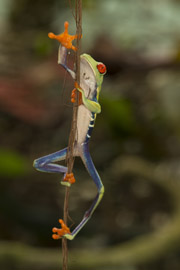
Diverse subjects characterize this exciting tour to one of the
most accessible and rewarding wildlife destinations!
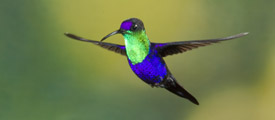 Our brochures are detailed. After looking at the brief points below, if you're interested, take the time to read the brochure. And, for a very great understanding of what we see and photograph (in detail) check out any of our Trip Reports. Or check out the latest Trip Report, 2019.
Our brochures are detailed. After looking at the brief points below, if you're interested, take the time to read the brochure. And, for a very great understanding of what we see and photograph (in detail) check out any of our Trip Reports. Or check out the latest Trip Report, 2019.
Trip Highlights
Four Different Locations - covering the east, the north, and central Costa Rica
Hummingbirds - Using our High Speed Flash setups
We'll be photographing Hummingbirds at four different locations,
using our flash setups at most of these locations.
You will also receive our very detailed pdf on maximizing your Hummingbird photography via easy to understand Photoshop Techniques.
Bats - We initiated this exciting photography in Costa Rica,
now copied by a few other tours!
You wil be using our equipment for fool-proof shots!
Reptiles and Amphibians - treefrogs, lizards, and snakes!
We've been photographing at this specialized Reptile Zoo for years!
Macaws - wild and in flight!
Special Birds: The Respendent Quetzal
Three Leader Naturalists - Joe, Mary, and José
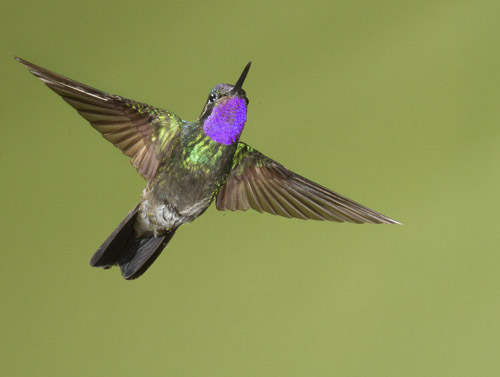 This is an incredibly diverse trip, with in-depth emphasis upon hummingbirds and other bird species, landscapes, and reptiles, mammals, including flying bats, and macro subjects.
This is an incredibly diverse trip, with in-depth emphasis upon hummingbirds and other bird species, landscapes, and reptiles, mammals, including flying bats, and macro subjects.
Our tour operator, Greg Basco from Photo Verde Tours, lives in Costa Rica and has spent a great deal of time scouting and finding the best shooting locations. Because some of our locations are unique, Greg has asked us to not be specific as to the name of a lodge or location. He'd like his hard work to be reserved for those who work with him, rather than through surfing on the internet. Accordingly, we've omitted the specific name of a lodge or locale when appropriate.
We will visit a variety of locations for outstanding photography.
 We'll begin our tour at the Hotel Bougainvillea, where we'll have our first meeting the evening before our departure for our main shooting locations. We encourage everyone to arrive early, even the day before, as the hotel offers some great shooting. This hotel, located near the outskirts of the city, is beautifully landscaped and provides wonderful opportunities for macro photography, of insects, flowers, plants, and some telephoto work of the birds frequenting the garden.
We'll begin our tour at the Hotel Bougainvillea, where we'll have our first meeting the evening before our departure for our main shooting locations. We encourage everyone to arrive early, even the day before, as the hotel offers some great shooting. This hotel, located near the outskirts of the city, is beautifully landscaped and provides wonderful opportunities for macro photography, of insects, flowers, plants, and some telephoto work of the birds frequenting the garden.
On our hotel grounds outside San Jose the gardens provide a wealth of photographic subjects. Chief amongst these are the blue-crowned mot-mots that quietly perch, waiting to ambush insects and small frogs. The mot-mots are easy to photograph once they are spotted, but they sit quietly and can be missed!
On our January, 2022 tour
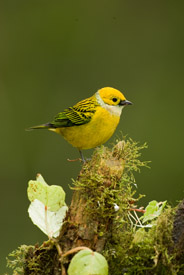 Our First Location
Our First Location
Our first destination is a lodge in the northeast near the Nicaragua border where we will find tropical forest birds, reptiles, and mammals. Here we will photograph, at eye-level, two species of toucan, as well as aracaris, tanagers, woodpeckers, and many other bird species. On the jungle trails there are leaf-cutter ants, various other macro subjects, and cryptic reptiles, birds, and mammals. We'll also spend time in the evening photographing nectar-feeding bats with our flash setups. You'll return home with dozens, if not hundreds, of great bat photos!




Chestnut-mandibled toucan, Keel-billed toucan, brown-hooded parrot, and Collared Aracaris are easy to shoot from our porch perch!
Bats
At this location we'll have a wonderful opportunity to photograph Pallas's Long-tongued Bats that visit hummingbird feeders in the forest, about 100 yards from our lodge. I'll have a flash setup there with an infrared tripping device, and you'll get spectacular images of bats flying in towards the feeder.
I'm especially proud of this portion of the trip as I was the first to recognize this opportunity, and to have groups shoot these bats. I wish I could say that my techniques haven't been copied by others -- they have, but we believe imitation is the sincerest form of flattery.
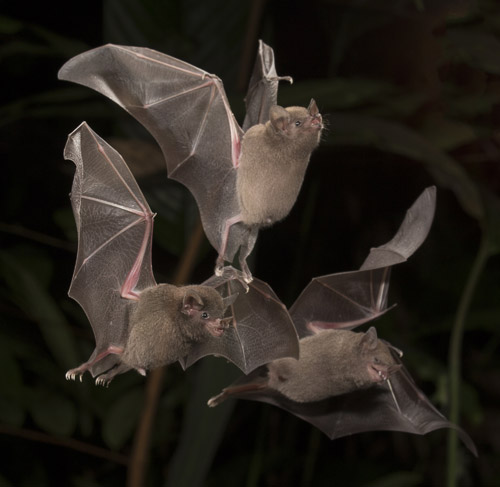
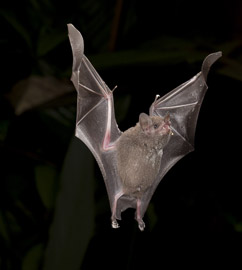
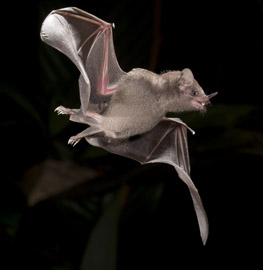
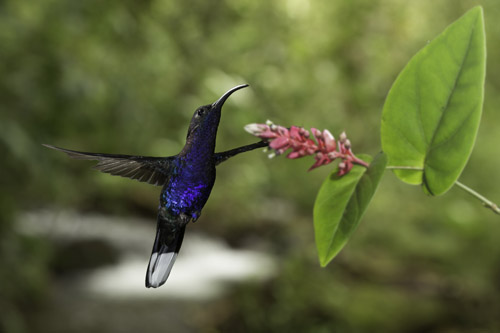 You'll have the opportunity to photograph hummingbirds at almost all of our locations. If possible, we'll have at least one high speed setup at each location -- we can't be more specific on this as some of our locations are somewhat weather dependent. However, natural light or on-camera flash shooting will be possible everywhere. Costa Rica has dozens of hummingbird species and by shooting at several locations we maximize our opportunities for filming several different species, as well as the bird life found at these locations.
You'll have the opportunity to photograph hummingbirds at almost all of our locations. If possible, we'll have at least one high speed setup at each location -- we can't be more specific on this as some of our locations are somewhat weather dependent. However, natural light or on-camera flash shooting will be possible everywhere. Costa Rica has dozens of hummingbird species and by shooting at several locations we maximize our opportunities for filming several different species, as well as the bird life found at these locations.
Our Second Location
 We will be staying at the Arenal Observatory Lodge. At this writing Arenal has once again gone dormant, but the lodge provides us with a wonderful base of operation for our reptile and amphibian photography (see below) as well as the natural light hummingbirds and various birds found around the lodge.
We will be staying at the Arenal Observatory Lodge. At this writing Arenal has once again gone dormant, but the lodge provides us with a wonderful base of operation for our reptile and amphibian photography (see below) as well as the natural light hummingbirds and various birds found around the lodge.
There is a variety of birds and mammals that visit the Arenal feeders. These species include violet-headed hummingbird, scintillant and volcano hummingbirds, black guan, rufous motmot, chestnut-capped brush finch, Montezuma oropendola, crested guan, emerald tanager, golden-hooded tanager, blue-gray tanager, collared aracari, red-legged honeycreeper, paca, agouti, coatimundi, and howler monkey.

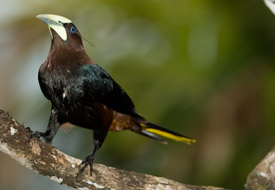
While at Arenal we will spend much of a day at a reptile/herptile zoo/park where we will photograph a variety of reptiles and amphibians in natural setups, both indoors and out. After breakfast we'll drive to the reptile park where we will photograph a variety of herptiles - reptiles and amphibians - in a studio setting. We use flash and set up natural backgrounds and props, similar to what we do at our Hoot Hollow Reptiles of the World Photo Shoots.
Our subject list may include neotropical rattlesnake, cantil, bushmaster, jumping pit viper, hog-nosed pit viper, eyelash vipers (various color morphs including yellow), neotropical bird snake, green vine snake, brown vine snake, short-nosed vine snake, satiny parrot snake, strawberry poison frog, green and black poison frog, red-eyed tree frog and other arboreal vipers, bushmasters and fer-de-lance vipers, and some lizards. We may also have time for the tarantula collection, too!
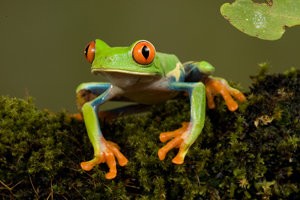
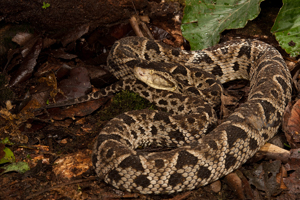
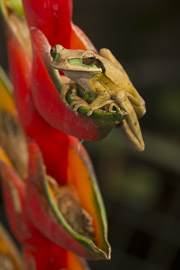
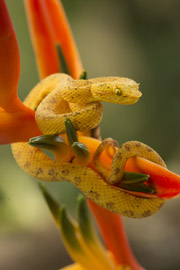
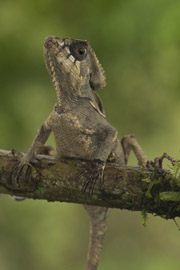

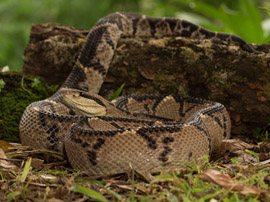
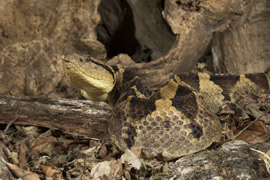
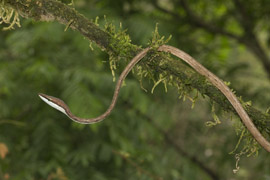
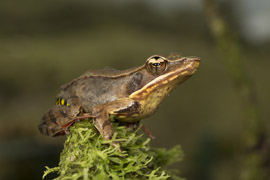
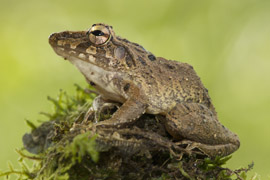
Our Third Location.
En route to the base for our third major shooting location we spend part of the day at a private wildlife sanctuary where we will photograph Scarlet Macaws and various Parrots that have been reintroduced to the wild. Some of these birds now breed in the wild here, and all are now free-flying and 'wild,' although habituated to people and very easy to photograph. The facility also has a captive jaguar (confiscated from an illegal owner) that can offer some great portraits.
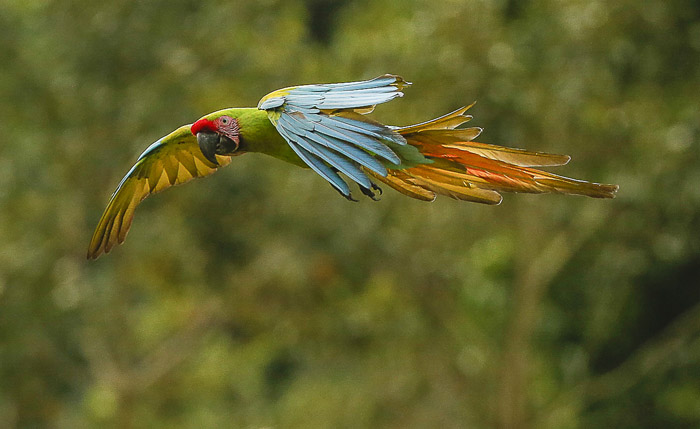
Our lodge at the third location has a great feeder for song birds and for mammals, and you'll have a good chance to shoot coatis, a rangy raccoon-like mammal, and two antelope-like rodents, agoutis and pacas. We will be setting up our hummingbird sets shortly after arriving and should start our hummingbird rotation by late afternoon.
We rotate people through the hummingbird sets so that everyone has a chance at 'the hottest' feeder, and the different backgrounds and setups. This will give you tremendous variety in your shooting as well.
Our focus, here, is on hummingbirds, truly a highlight of this diverse trip.
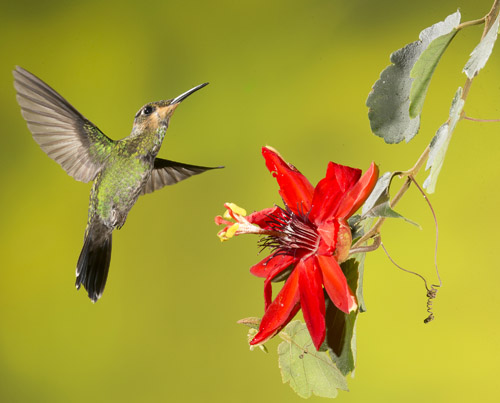 Hummingbirds -
Hummingbirds -
At this destination we will photograph hummingbirds at our lodge and at a location nearby where we will also have the chance for other birds and spectacular water fall and landscape photography, in additon to more species of hummingbirds.
We have the potential to see and photograph the following birds:
Hummingbirds: violet sabrewing, green-crowned brilliant, purple-throated mountain gem, black-bellied hummingbird, coppery-headed emerald, green thorntail, green hermit, and rufous-tailed.
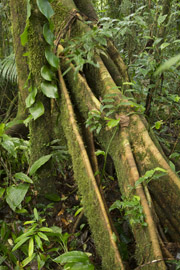
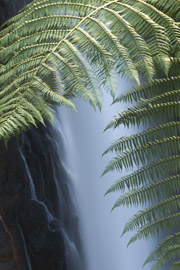
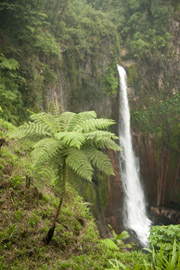
The forest surrounding the lodge, and the waterfalls nearby, offer wonderful opportunities for landscape photography. Although everyone is always focused on the birds, we'll encourage people to photograph this unique landscape and habitat as well!
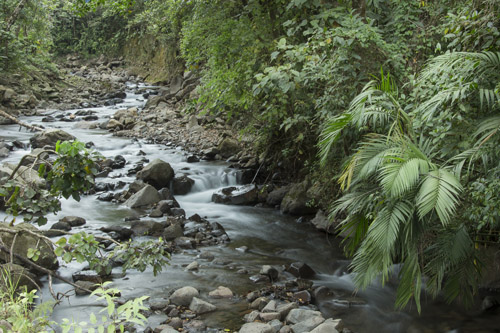
At the lodge we will concentrate on our hummingbird flash photography and the birds and mammals that regularly visit the feeders. You will be using our high speed flash setups for the hummingbird shoots, so you won't need to carry alot of extra gear!
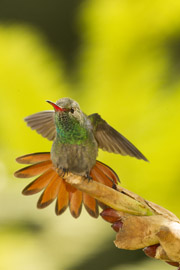
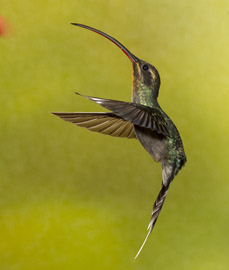
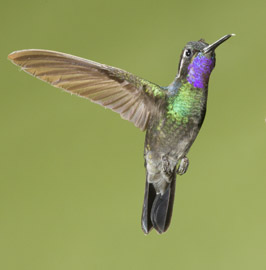
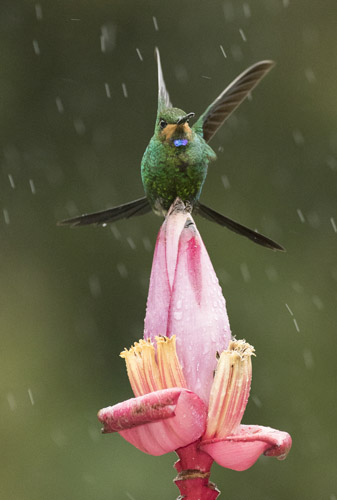 We photograph hummingbirds via two methods. Here, at our third destination we'll be doing high-speed flash setups that we provide. Most flash setups involve four flashes, and you will be the only person shooting at that set during your rotation! Participants don't need to carry their own setups. When possible, we photograph our hummingbirds as they visit flowers we bait with sugar water. This provides some wonderful images, but it can also be a bit tedious, and, before birds get accustomed to a new feeding location, it can be a bit costly for time.
We photograph hummingbirds via two methods. Here, at our third destination we'll be doing high-speed flash setups that we provide. Most flash setups involve four flashes, and you will be the only person shooting at that set during your rotation! Participants don't need to carry their own setups. When possible, we photograph our hummingbirds as they visit flowers we bait with sugar water. This provides some wonderful images, but it can also be a bit tedious, and, before birds get accustomed to a new feeding location, it can be a bit costly for time.
We'll also be photographing hummers as they visit our special tube feeders, which can later be removed in Photoshop and replaced with any number of flower images (that we provide).
We'll be doing a mini-Photoshop workshop on how you can composite images to maximize your shooting by removing tubes and adding flowers, thereby providing the greatest variety of compositions and artistry. While all of us would love to be able to shoot every hummingbird at a natural flower, time, cooperation, and opportunity precludes that wish for every shot. Via Photoshop, however, we can maximize our shooting opportunities!
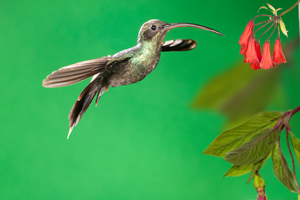
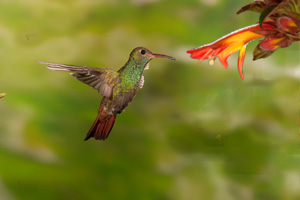
Some of these images are composites, and some are straight shots. Can you tell which are which?
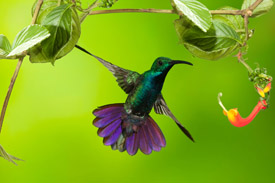
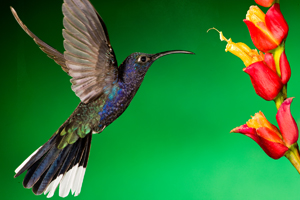
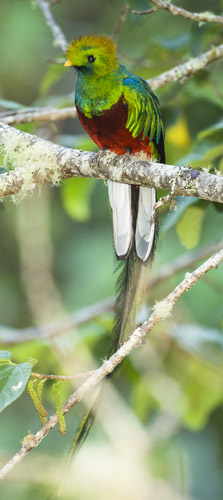 Our Fourth Location
Our Fourth Location
We'll travel to the western side of the Costa Rican highlands where we'll visit Paraiso del Quetzal where our objective will be to photograph Costa Rica's iconic bird species, the Resplendent Quetzal. We'll also have the opportunity to photograph more hummingbirds using our high-speed flash systems, and a variety of other birds at the feeders around the lodge. The landscape in this area is particularly stunning, with trees festooned with bromeliads and ferns in a cloud forest habitat.
We'll also be doing a special trip to another location for several other hummingbird species while based at this location.
We'll have a final morning of shooting around Paraiso del Quetzal. After lunch we'll drive back to San Jose for a Farewell Dinner and overnight at the Hotel Bougainvillea. We'll have a participant slide show (digital) that evening as a final recap of this adventure.
Our return to San Jose. You are free to depart at any time on the following day.
Our Objective
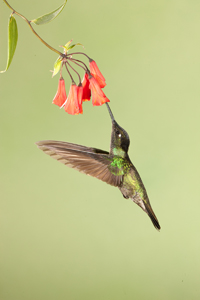 You should return home with the best photographs of Costa Rica wildlife that is possible in the time frame we have available. This doesn't come easily; it requires early starts, patience, and a degree of luck. We supply the flash equipment for the hummingbird shoots and for many of the reptile subjects, so you can expect gear that works and that is suited for the job at hand. We're confident that we are able to provide you with the most complete tour possible, as well as vital Photoshop information and techniques that you can use later with your work.
You should return home with the best photographs of Costa Rica wildlife that is possible in the time frame we have available. This doesn't come easily; it requires early starts, patience, and a degree of luck. We supply the flash equipment for the hummingbird shoots and for many of the reptile subjects, so you can expect gear that works and that is suited for the job at hand. We're confident that we are able to provide you with the most complete tour possible, as well as vital Photoshop information and techniques that you can use later with your work.
What's Included
The photo tour for our Costa Rica Photo Tour is $6295 (eight participants) based on land costs from San Jose, Costa Rica and includes all accommodations (double occupancy) as specified above, all meals as specified except day one, entrance fees, and ground transportation in our spacious, air-conditioned tour bus. Also included, professional bilingual photo/nature/culture guide, photo guide assistance with workshops and informal learning, assistance with caption and identification information, taxes for all services included and listed. A single rooming supplement is available at an additional cost of $613.
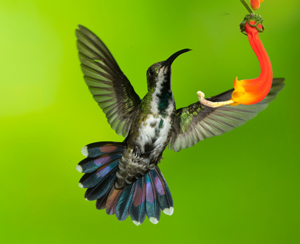 The tour price includes all meals, a welcome and farewell drink, and the driver/guide's tip. There will be at least three electronic flash setups (weather permitting), and participants will be rotated in a fair and equal basis through these setups.
The tour price includes all meals, a welcome and farewell drink, and the driver/guide's tip. There will be at least three electronic flash setups (weather permitting), and participants will be rotated in a fair and equal basis through these setups.
What's Not Included
Gratuities for hotel or lodge staff, airport transfer, and laundry fees or lodging that takes place before or after the photo tour and those meals. Also not included is Airfare to Costa Rica, the Airport departure tax, alcoholic drinks (excepting our welcome and farewell receptions), non-meal time snacks, non-meal time soft drinks and bottled water, laundry, internet and souvenirs.
We always recommend trip cancellation insurance and emergency medical evacuation insurance.
Our Roles as Leaders, and Your Role
Mary and I know wildlife, and how to photograph it. I want everyone to obtain great photographs, and to enjoy himself or herself while doing so. Great photography requires patience, luck, and time, and you can trust us that everything we do as your trip leaders will have those priorities - your photos and well-being as an individual in our group -- in mind.
Don't expect me to compromise the group for you, whether that's for tardiness, forgetfulness, or otherwise. We won't. We're up front about our time, tenacity and seriousness, and we want our people to know this. If you join us, that's what you're getting into. I think some people join a group and expect it to conform to their individual demands. We won't do that. If you like to travel privately, or to 'run the show,' or to make selfish demands, we'd suggest you go alone.
At the snake park we will be photographing potentially lethal reptiles, and safety, and following specific instructions, will be paramount and mandatory. Photographers and participants involved in this activity must follow our instructions and directions, and if these are not followed, or if someone acts carelessly or foolishly, they will be ordered to leave the reptile shoot immediately, no questions asked. This hardlining is for your safety, and for the welfare and success of the entire group, as well as for insuring your personal safety.
Foreign travel is exciting, but it can be exhausting for some. You very well may need to sit out a hummingbird session or feeder shoot and relax one day, and if you feel this way, please do so. We press fairly hard, but we do so because we know that many in the group have high-energy reserves, limited budgets, and inexhaustible enthusiasm, and these folks want as much out of the experience as they can get. We aim to deliver that.
About Your Leaders
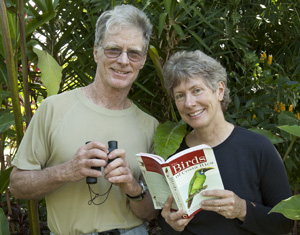 My wife Mary Ann and I strive to provide the most comfortable and thorough safari you will experience. Both Mary and I are photographers, and I'd hope you've seen our credits. These included Audubon, National Geographic, National Wildlife, Ranger Rick, Natural History, Living Bird, Birder's World, Wildlife Conservation, and most nature/wildlife calendars.
My wife Mary Ann and I strive to provide the most comfortable and thorough safari you will experience. Both Mary and I are photographers, and I'd hope you've seen our credits. These included Audubon, National Geographic, National Wildlife, Ranger Rick, Natural History, Living Bird, Birder's World, Wildlife Conservation, and most nature/wildlife calendars.
In 1994 Mary Ann won two first place awards in the prestigious BBC Wildlife Photographer of the Year competition, in Endangered Species and in Bird Behavior. In 1998 she had three highly commended images published in the BBC competition, ALL THREE from Kenya! She won first place in the Cemex/Nature's Best photo contest in the Humor Division for Professional Photographers. In 2003 she won first place in Mammal Behavior in the Agfa All Africa photo competition with a dust bathing bull elephant from Samburu. Mary has written a number of children's books, including Leopards, Grizzly Bears, Woodpeckers, Flying Squirrels, Sunflowers, Cobras, Jupiter, Boas, Garter Snakes, Pythons, Rattlesnakes, Ducks, Chickens, Horses, and Cows, and a coffee table book, Out of the Past, Amish Tradition and Faith.
I've written several how-to wildlife photography books -- A Practical Guide to Photographing American Wildlife, The Wildlife Photographer's Field Manual, The Complete Guide to Wildlife Photography, Designing Wildlife Photographs, Photographing on Safari, A Field Guide to Photographing in East Africa, and The New Complete Guide to Wildlife Photography. In 1999 Todtri published African Wildlife, and in 1999 we produced our first instructional video, A Video Guide to Photographing on Safari with Joe and Mary Ann McDonald. The video has received rave reviews, and it is the definitive guide for preparing yourself for a safari. I've won several times for highly commended images in both the Cemex/Nature's Best and the Agfa all Africa photo competitions. In 2003 I won 2nd place in the World in Our Hands category in the BBC competition with an image from Africa. In 2013 I won first place in the Mammal Behavior category, of jaguars fighting, in this competition.
Mary and I were featured in the book, the World's Best Wildlife Photographers, and we write regularly appearing columns in Nature Photographer magazine and in several web magazines. Our latest book, Digital Nature Photography, From Capture to Output, is a PDF file that covers EVERYTHING you need to know about digital nature photography, including workflow, file management, RAW conversion, and maximizing the digital image. It is available directly through our office.
Contact our office at info@hoothollow.com.
Phone at 717-543-6423
Costa Rica
Wildlife and Nature
Photo Tour
Dates: TBA
Cost $ TBA
(Single Rooming Supplement $613.00)
Please contact our office ASAP!
Limited to 8 Participants

Pallas's long-tonued bat

Violet Sabre-wing

Red-eyed Treefrog



Diverse subjects characterize this exciting tour to one of the
most accessible and rewarding wildlife destinations!
 Our brochures are detailed. After looking at the brief points below, if you're interested, take the time to read the brochure. And, for a very great understanding of what we see and photograph (in detail) check out any of our Trip Reports. Or check out the latest Trip Report, 2019.
Our brochures are detailed. After looking at the brief points below, if you're interested, take the time to read the brochure. And, for a very great understanding of what we see and photograph (in detail) check out any of our Trip Reports. Or check out the latest Trip Report, 2019.
Trip Highlights
Four Different Locations - covering the east, the north, and central Costa Rica
Hummingbirds - Using our High Speed Flash setups
We'll be photographing Hummingbirds at four different locations,
using our flash setups at most of these locations.
You will also receive our very detailed pdf on maximizing your Hummingbird photography via easy to understand Photoshop Techniques.
Bats - We initiated this exciting photography in Costa Rica,
now copied by a few other tours!
You wil be using our equipment for fool-proof shots!
Reptiles and Amphibians - treefrogs, lizards, and snakes!
We've been photographing at this specialized Reptile Zoo for years!
Macaws - wild and in flight!
Special Birds: The Respendent Quetzal
Three Leader Naturalists - Joe, Mary, and José
 This is an incredibly diverse trip, with in-depth emphasis upon hummingbirds and other bird species, landscapes, and reptiles, mammals, including flying bats, and macro subjects.
This is an incredibly diverse trip, with in-depth emphasis upon hummingbirds and other bird species, landscapes, and reptiles, mammals, including flying bats, and macro subjects.
Our tour operator, Greg Basco from Photo Verde Tours, lives in Costa Rica and has spent a great deal of time scouting and finding the best shooting locations. Because some of our locations are unique, Greg has asked us to not be specific as to the name of a lodge or location. He'd like his hard work to be reserved for those who work with him, rather than through surfing on the internet. Accordingly, we've omitted the specific name of a lodge or locale when appropriate.
We will visit a variety of locations for outstanding photography.
 We'll begin our tour at the Hotel Bougainvillea, where we'll have our first meeting the evening before our departure for our main shooting locations. We encourage everyone to arrive early, even the day before, as the hotel offers some great shooting. This hotel, located near the outskirts of the city, is beautifully landscaped and provides wonderful opportunities for macro photography, of insects, flowers, plants, and some telephoto work of the birds frequenting the garden.
We'll begin our tour at the Hotel Bougainvillea, where we'll have our first meeting the evening before our departure for our main shooting locations. We encourage everyone to arrive early, even the day before, as the hotel offers some great shooting. This hotel, located near the outskirts of the city, is beautifully landscaped and provides wonderful opportunities for macro photography, of insects, flowers, plants, and some telephoto work of the birds frequenting the garden.
On our hotel grounds outside San Jose the gardens provide a wealth of photographic subjects. Chief amongst these are the blue-crowned mot-mots that quietly perch, waiting to ambush insects and small frogs. The mot-mots are easy to photograph once they are spotted, but they sit quietly and can be missed!
On our January, 2022 tour
 Our First Location
Our First Location
Our first destination is a lodge in the northeast near the Nicaragua border where we will find tropical forest birds, reptiles, and mammals. Here we will photograph, at eye-level, two species of toucan, as well as aracaris, tanagers, woodpeckers, and many other bird species. On the jungle trails there are leaf-cutter ants, various other macro subjects, and cryptic reptiles, birds, and mammals. We'll also spend time in the evening photographing nectar-feeding bats with our flash setups. You'll return home with dozens, if not hundreds, of great bat photos!




Chestnut-mandibled toucan, Keel-billed toucan, brown-hooded parrot, and Collared Aracaris are easy to shoot from our porch perch!
Bats
At this location we'll have a wonderful opportunity to photograph Pallas's Long-tongued Bats that visit hummingbird feeders in the forest, about 100 yards from our lodge. I'll have a flash setup there with an infrared tripping device, and you'll get spectacular images of bats flying in towards the feeder.
I'm especially proud of this portion of the trip as I was the first to recognize this opportunity, and to have groups shoot these bats. I wish I could say that my techniques haven't been copied by others -- they have, but we believe imitation is the sincerest form of flattery.



 You'll have the opportunity to photograph hummingbirds at almost all of our locations. If possible, we'll have at least one high speed setup at each location -- we can't be more specific on this as some of our locations are somewhat weather dependent. However, natural light or on-camera flash shooting will be possible everywhere. Costa Rica has dozens of hummingbird species and by shooting at several locations we maximize our opportunities for filming several different species, as well as the bird life found at these locations.
You'll have the opportunity to photograph hummingbirds at almost all of our locations. If possible, we'll have at least one high speed setup at each location -- we can't be more specific on this as some of our locations are somewhat weather dependent. However, natural light or on-camera flash shooting will be possible everywhere. Costa Rica has dozens of hummingbird species and by shooting at several locations we maximize our opportunities for filming several different species, as well as the bird life found at these locations.
Our Second Location
 We will be staying at the Arenal Observatory Lodge. At this writing Arenal has once again gone dormant, but the lodge provides us with a wonderful base of operation for our reptile and amphibian photography (see below) as well as the natural light hummingbirds and various birds found around the lodge.
We will be staying at the Arenal Observatory Lodge. At this writing Arenal has once again gone dormant, but the lodge provides us with a wonderful base of operation for our reptile and amphibian photography (see below) as well as the natural light hummingbirds and various birds found around the lodge.
There is a variety of birds and mammals that visit the Arenal feeders. These species include violet-headed hummingbird, scintillant and volcano hummingbirds, black guan, rufous motmot, chestnut-capped brush finch, Montezuma oropendola, crested guan, emerald tanager, golden-hooded tanager, blue-gray tanager, collared aracari, red-legged honeycreeper, paca, agouti, coatimundi, and howler monkey.


While at Arenal we will spend much of a day at a reptile/herptile zoo/park where we will photograph a variety of reptiles and amphibians in natural setups, both indoors and out. After breakfast we'll drive to the reptile park where we will photograph a variety of herptiles - reptiles and amphibians - in a studio setting. We use flash and set up natural backgrounds and props, similar to what we do at our Hoot Hollow Reptiles of the World Photo Shoots.
Our subject list may include neotropical rattlesnake, cantil, bushmaster, jumping pit viper, hog-nosed pit viper, eyelash vipers (various color morphs including yellow), neotropical bird snake, green vine snake, brown vine snake, short-nosed vine snake, satiny parrot snake, strawberry poison frog, green and black poison frog, red-eyed tree frog and other arboreal vipers, bushmasters and fer-de-lance vipers, and some lizards. We may also have time for the tarantula collection, too!











Our Third Location.
En route to the base for our third major shooting location we spend part of the day at a private wildlife sanctuary where we will photograph Scarlet Macaws and various Parrots that have been reintroduced to the wild. Some of these birds now breed in the wild here, and all are now free-flying and 'wild,' although habituated to people and very easy to photograph. The facility also has a captive jaguar (confiscated from an illegal owner) that can offer some great portraits.

Our lodge at the third location has a great feeder for song birds and for mammals, and you'll have a good chance to shoot coatis, a rangy raccoon-like mammal, and two antelope-like rodents, agoutis and pacas. We will be setting up our hummingbird sets shortly after arriving and should start our hummingbird rotation by late afternoon.
We rotate people through the hummingbird sets so that everyone has a chance at 'the hottest' feeder, and the different backgrounds and setups. This will give you tremendous variety in your shooting as well.
Our focus, here, is on hummingbirds, truly a highlight of this diverse trip.
 Hummingbirds -
Hummingbirds -
At this destination we will photograph hummingbirds at our lodge and at a location nearby where we will also have the chance for other birds and spectacular water fall and landscape photography, in additon to more species of hummingbirds.
We have the potential to see and photograph the following birds:
Hummingbirds: violet sabrewing, green-crowned brilliant, purple-throated mountain gem, black-bellied hummingbird, coppery-headed emerald, green thorntail, green hermit, and rufous-tailed.



The forest surrounding the lodge, and the waterfalls nearby, offer wonderful opportunities for landscape photography. Although everyone is always focused on the birds, we'll encourage people to photograph this unique landscape and habitat as well!

At the lodge we will concentrate on our hummingbird flash photography and the birds and mammals that regularly visit the feeders. You will be using our high speed flash setups for the hummingbird shoots, so you won't need to carry alot of extra gear!



 We photograph hummingbirds via two methods. Here, at our third destination we'll be doing high-speed flash setups that we provide. Most flash setups involve four flashes, and you will be the only person shooting at that set during your rotation! Participants don't need to carry their own setups. When possible, we photograph our hummingbirds as they visit flowers we bait with sugar water. This provides some wonderful images, but it can also be a bit tedious, and, before birds get accustomed to a new feeding location, it can be a bit costly for time.
We photograph hummingbirds via two methods. Here, at our third destination we'll be doing high-speed flash setups that we provide. Most flash setups involve four flashes, and you will be the only person shooting at that set during your rotation! Participants don't need to carry their own setups. When possible, we photograph our hummingbirds as they visit flowers we bait with sugar water. This provides some wonderful images, but it can also be a bit tedious, and, before birds get accustomed to a new feeding location, it can be a bit costly for time.
We'll also be photographing hummers as they visit our special tube feeders, which can later be removed in Photoshop and replaced with any number of flower images (that we provide).
We'll be doing a mini-Photoshop workshop on how you can composite images to maximize your shooting by removing tubes and adding flowers, thereby providing the greatest variety of compositions and artistry. While all of us would love to be able to shoot every hummingbird at a natural flower, time, cooperation, and opportunity precludes that wish for every shot. Via Photoshop, however, we can maximize our shooting opportunities!


Some of these images are composites, and some are straight shots. Can you tell which are which?


 Our Fourth Location
Our Fourth Location
We'll travel to the western side of the Costa Rican highlands where we'll visit Paraiso del Quetzal where our objective will be to photograph Costa Rica's iconic bird species, the Resplendent Quetzal. We'll also have the opportunity to photograph more hummingbirds using our high-speed flash systems, and a variety of other birds at the feeders around the lodge. The landscape in this area is particularly stunning, with trees festooned with bromeliads and ferns in a cloud forest habitat.
We'll also be doing a special trip to another location for several other hummingbird species while based at this location.
We'll have a final morning of shooting around Paraiso del Quetzal. After lunch we'll drive back to San Jose for a Farewell Dinner and overnight at the Hotel Bougainvillea. We'll have a participant slide show (digital) that evening as a final recap of this adventure.
Our return to San Jose. You are free to depart at any time on the following day.
Our Objective
 You should return home with the best photographs of Costa Rica wildlife that is possible in the time frame we have available. This doesn't come easily; it requires early starts, patience, and a degree of luck. We supply the flash equipment for the hummingbird shoots and for many of the reptile subjects, so you can expect gear that works and that is suited for the job at hand. We're confident that we are able to provide you with the most complete tour possible, as well as vital Photoshop information and techniques that you can use later with your work.
You should return home with the best photographs of Costa Rica wildlife that is possible in the time frame we have available. This doesn't come easily; it requires early starts, patience, and a degree of luck. We supply the flash equipment for the hummingbird shoots and for many of the reptile subjects, so you can expect gear that works and that is suited for the job at hand. We're confident that we are able to provide you with the most complete tour possible, as well as vital Photoshop information and techniques that you can use later with your work.
What's Included
The photo tour for our Costa Rica Photo Tour is $6295 (eight participants) based on land costs from San Jose, Costa Rica and includes all accommodations (double occupancy) as specified above, all meals as specified except day one, entrance fees, and ground transportation in our spacious, air-conditioned tour bus. Also included, professional bilingual photo/nature/culture guide, photo guide assistance with workshops and informal learning, assistance with caption and identification information, taxes for all services included and listed. A single rooming supplement is available at an additional cost of $613.
 The tour price includes all meals, a welcome and farewell drink, and the driver/guide's tip. There will be at least three electronic flash setups (weather permitting), and participants will be rotated in a fair and equal basis through these setups.
The tour price includes all meals, a welcome and farewell drink, and the driver/guide's tip. There will be at least three electronic flash setups (weather permitting), and participants will be rotated in a fair and equal basis through these setups.
What's Not Included
Gratuities for hotel or lodge staff, airport transfer, and laundry fees or lodging that takes place before or after the photo tour and those meals. Also not included is Airfare to Costa Rica, the Airport departure tax, alcoholic drinks (excepting our welcome and farewell receptions), non-meal time snacks, non-meal time soft drinks and bottled water, laundry, internet and souvenirs.
We always recommend trip cancellation insurance and emergency medical evacuation insurance.
Our Roles as Leaders, and Your Role
Mary and I know wildlife, and how to photograph it. I want everyone to obtain great photographs, and to enjoy himself or herself while doing so. Great photography requires patience, luck, and time, and you can trust us that everything we do as your trip leaders will have those priorities - your photos and well-being as an individual in our group -- in mind.
Don't expect me to compromise the group for you, whether that's for tardiness, forgetfulness, or otherwise. We won't. We're up front about our time, tenacity and seriousness, and we want our people to know this. If you join us, that's what you're getting into. I think some people join a group and expect it to conform to their individual demands. We won't do that. If you like to travel privately, or to 'run the show,' or to make selfish demands, we'd suggest you go alone.
At the snake park we will be photographing potentially lethal reptiles, and safety, and following specific instructions, will be paramount and mandatory. Photographers and participants involved in this activity must follow our instructions and directions, and if these are not followed, or if someone acts carelessly or foolishly, they will be ordered to leave the reptile shoot immediately, no questions asked. This hardlining is for your safety, and for the welfare and success of the entire group, as well as for insuring your personal safety.
Foreign travel is exciting, but it can be exhausting for some. You very well may need to sit out a hummingbird session or feeder shoot and relax one day, and if you feel this way, please do so. We press fairly hard, but we do so because we know that many in the group have high-energy reserves, limited budgets, and inexhaustible enthusiasm, and these folks want as much out of the experience as they can get. We aim to deliver that.
About Your Leaders
 My wife Mary Ann and I strive to provide the most comfortable and thorough safari you will experience. Both Mary and I are photographers, and I'd hope you've seen our credits. These included Audubon, National Geographic, National Wildlife, Ranger Rick, Natural History, Living Bird, Birder's World, Wildlife Conservation, and most nature/wildlife calendars.
My wife Mary Ann and I strive to provide the most comfortable and thorough safari you will experience. Both Mary and I are photographers, and I'd hope you've seen our credits. These included Audubon, National Geographic, National Wildlife, Ranger Rick, Natural History, Living Bird, Birder's World, Wildlife Conservation, and most nature/wildlife calendars.
In 1994 Mary Ann won two first place awards in the prestigious BBC Wildlife Photographer of the Year competition, in Endangered Species and in Bird Behavior. In 1998 she had three highly commended images published in the BBC competition, ALL THREE from Kenya! She won first place in the Cemex/Nature's Best photo contest in the Humor Division for Professional Photographers. In 2003 she won first place in Mammal Behavior in the Agfa All Africa photo competition with a dust bathing bull elephant from Samburu. Mary has written a number of children's books, including Leopards, Grizzly Bears, Woodpeckers, Flying Squirrels, Sunflowers, Cobras, Jupiter, Boas, Garter Snakes, Pythons, Rattlesnakes, Ducks, Chickens, Horses, and Cows, and a coffee table book, Out of the Past, Amish Tradition and Faith.
I've written several how-to wildlife photography books -- A Practical Guide to Photographing American Wildlife, The Wildlife Photographer's Field Manual, The Complete Guide to Wildlife Photography, Designing Wildlife Photographs, Photographing on Safari, A Field Guide to Photographing in East Africa, and The New Complete Guide to Wildlife Photography. In 1999 Todtri published African Wildlife, and in 1999 we produced our first instructional video, A Video Guide to Photographing on Safari with Joe and Mary Ann McDonald. The video has received rave reviews, and it is the definitive guide for preparing yourself for a safari. I've won several times for highly commended images in both the Cemex/Nature's Best and the Agfa all Africa photo competitions. In 2003 I won 2nd place in the World in Our Hands category in the BBC competition with an image from Africa. In 2013 I won first place in the Mammal Behavior category, of jaguars fighting, in this competition.
Mary and I were featured in the book, the World's Best Wildlife Photographers, and we write regularly appearing columns in Nature Photographer magazine and in several web magazines. Our latest book, Digital Nature Photography, From Capture to Output, is a PDF file that covers EVERYTHING you need to know about digital nature photography, including workflow, file management, RAW conversion, and maximizing the digital image. It is available directly through our office.
Contact our office at info@hoothollow.com.
Phone at 717-543-6423
Costa Rica
Wildlife and Nature
Photo Tour
Dates: TBA
Cost $ TBA
(Single Rooming Supplement $613.00)
Please contact our office ASAP!
Limited to 8 Participants

Pallas's long-tonued bat

Violet Sabre-wing

Red-eyed Treefrog



Diverse subjects characterize this exciting tour to one of the
most accessible and rewarding wildlife destinations!
 Our brochures are detailed. After looking at the brief points below, if you're interested, take the time to read the brochure. And, for a very great understanding of what we see and photograph (in detail) check out any of our Trip Reports. Or check out the latest Trip Report, 2019.
Our brochures are detailed. After looking at the brief points below, if you're interested, take the time to read the brochure. And, for a very great understanding of what we see and photograph (in detail) check out any of our Trip Reports. Or check out the latest Trip Report, 2019.
Trip Highlights
Four Different Locations - covering the east, the north, and central Costa Rica
Hummingbirds - Using our High Speed Flash setups
We'll be photographing Hummingbirds at four different locations,
using our flash setups at most of these locations.
You will also receive our very detailed pdf on maximizing your Hummingbird photography via easy to understand Photoshop Techniques.
Bats - We initiated this exciting photography in Costa Rica,
now copied by a few other tours!
You wil be using our equipment for fool-proof shots!
Reptiles and Amphibians - treefrogs, lizards, and snakes!
We've been photographing at this specialized Reptile Zoo for years!
Macaws - wild and in flight!
Special Birds: The Respendent Quetzal
Three Leader Naturalists - Joe, Mary, and José
 This is an incredibly diverse trip, with in-depth emphasis upon hummingbirds and other bird species, landscapes, and reptiles, mammals, including flying bats, and macro subjects.
This is an incredibly diverse trip, with in-depth emphasis upon hummingbirds and other bird species, landscapes, and reptiles, mammals, including flying bats, and macro subjects.
Our tour operator, Greg Basco from Photo Verde Tours, lives in Costa Rica and has spent a great deal of time scouting and finding the best shooting locations. Because some of our locations are unique, Greg has asked us to not be specific as to the name of a lodge or location. He'd like his hard work to be reserved for those who work with him, rather than through surfing on the internet. Accordingly, we've omitted the specific name of a lodge or locale when appropriate.
We will visit a variety of locations for outstanding photography.
 We'll begin our tour at the Hotel Bougainvillea, where we'll have our first meeting the evening before our departure for our main shooting locations. We encourage everyone to arrive early, even the day before, as the hotel offers some great shooting. This hotel, located near the outskirts of the city, is beautifully landscaped and provides wonderful opportunities for macro photography, of insects, flowers, plants, and some telephoto work of the birds frequenting the garden.
We'll begin our tour at the Hotel Bougainvillea, where we'll have our first meeting the evening before our departure for our main shooting locations. We encourage everyone to arrive early, even the day before, as the hotel offers some great shooting. This hotel, located near the outskirts of the city, is beautifully landscaped and provides wonderful opportunities for macro photography, of insects, flowers, plants, and some telephoto work of the birds frequenting the garden.
On our hotel grounds outside San Jose the gardens provide a wealth of photographic subjects. Chief amongst these are the blue-crowned mot-mots that quietly perch, waiting to ambush insects and small frogs. The mot-mots are easy to photograph once they are spotted, but they sit quietly and can be missed!
On our January, 2022 tour
 Our First Location
Our First Location
Our first destination is a lodge in the northeast near the Nicaragua border where we will find tropical forest birds, reptiles, and mammals. Here we will photograph, at eye-level, two species of toucan, as well as aracaris, tanagers, woodpeckers, and many other bird species. On the jungle trails there are leaf-cutter ants, various other macro subjects, and cryptic reptiles, birds, and mammals. We'll also spend time in the evening photographing nectar-feeding bats with our flash setups. You'll return home with dozens, if not hundreds, of great bat photos!




Chestnut-mandibled toucan, Keel-billed toucan, brown-hooded parrot, and Collared Aracaris are easy to shoot from our porch perch!
Bats
At this location we'll have a wonderful opportunity to photograph Pallas's Long-tongued Bats that visit hummingbird feeders in the forest, about 100 yards from our lodge. I'll have a flash setup there with an infrared tripping device, and you'll get spectacular images of bats flying in towards the feeder.
I'm especially proud of this portion of the trip as I was the first to recognize this opportunity, and to have groups shoot these bats. I wish I could say that my techniques haven't been copied by others -- they have, but we believe imitation is the sincerest form of flattery.



 You'll have the opportunity to photograph hummingbirds at almost all of our locations. If possible, we'll have at least one high speed setup at each location -- we can't be more specific on this as some of our locations are somewhat weather dependent. However, natural light or on-camera flash shooting will be possible everywhere. Costa Rica has dozens of hummingbird species and by shooting at several locations we maximize our opportunities for filming several different species, as well as the bird life found at these locations.
You'll have the opportunity to photograph hummingbirds at almost all of our locations. If possible, we'll have at least one high speed setup at each location -- we can't be more specific on this as some of our locations are somewhat weather dependent. However, natural light or on-camera flash shooting will be possible everywhere. Costa Rica has dozens of hummingbird species and by shooting at several locations we maximize our opportunities for filming several different species, as well as the bird life found at these locations.
Our Second Location
 We will be staying at the Arenal Observatory Lodge. At this writing Arenal has once again gone dormant, but the lodge provides us with a wonderful base of operation for our reptile and amphibian photography (see below) as well as the natural light hummingbirds and various birds found around the lodge.
We will be staying at the Arenal Observatory Lodge. At this writing Arenal has once again gone dormant, but the lodge provides us with a wonderful base of operation for our reptile and amphibian photography (see below) as well as the natural light hummingbirds and various birds found around the lodge.
There is a variety of birds and mammals that visit the Arenal feeders. These species include violet-headed hummingbird, scintillant and volcano hummingbirds, black guan, rufous motmot, chestnut-capped brush finch, Montezuma oropendola, crested guan, emerald tanager, golden-hooded tanager, blue-gray tanager, collared aracari, red-legged honeycreeper, paca, agouti, coatimundi, and howler monkey.


While at Arenal we will spend much of a day at a reptile/herptile zoo/park where we will photograph a variety of reptiles and amphibians in natural setups, both indoors and out. After breakfast we'll drive to the reptile park where we will photograph a variety of herptiles - reptiles and amphibians - in a studio setting. We use flash and set up natural backgrounds and props, similar to what we do at our Hoot Hollow Reptiles of the World Photo Shoots.
Our subject list may include neotropical rattlesnake, cantil, bushmaster, jumping pit viper, hog-nosed pit viper, eyelash vipers (various color morphs including yellow), neotropical bird snake, green vine snake, brown vine snake, short-nosed vine snake, satiny parrot snake, strawberry poison frog, green and black poison frog, red-eyed tree frog and other arboreal vipers, bushmasters and fer-de-lance vipers, and some lizards. We may also have time for the tarantula collection, too!











Our Third Location.
En route to the base for our third major shooting location we spend part of the day at a private wildlife sanctuary where we will photograph Scarlet Macaws and various Parrots that have been reintroduced to the wild. Some of these birds now breed in the wild here, and all are now free-flying and 'wild,' although habituated to people and very easy to photograph. The facility also has a captive jaguar (confiscated from an illegal owner) that can offer some great portraits.

Our lodge at the third location has a great feeder for song birds and for mammals, and you'll have a good chance to shoot coatis, a rangy raccoon-like mammal, and two antelope-like rodents, agoutis and pacas. We will be setting up our hummingbird sets shortly after arriving and should start our hummingbird rotation by late afternoon.
We rotate people through the hummingbird sets so that everyone has a chance at 'the hottest' feeder, and the different backgrounds and setups. This will give you tremendous variety in your shooting as well.
Our focus, here, is on hummingbirds, truly a highlight of this diverse trip.
 Hummingbirds -
Hummingbirds -
At this destination we will photograph hummingbirds at our lodge and at a location nearby where we will also have the chance for other birds and spectacular water fall and landscape photography, in additon to more species of hummingbirds.
We have the potential to see and photograph the following birds:
Hummingbirds: violet sabrewing, green-crowned brilliant, purple-throated mountain gem, black-bellied hummingbird, coppery-headed emerald, green thorntail, green hermit, and rufous-tailed.



The forest surrounding the lodge, and the waterfalls nearby, offer wonderful opportunities for landscape photography. Although everyone is always focused on the birds, we'll encourage people to photograph this unique landscape and habitat as well!

At the lodge we will concentrate on our hummingbird flash photography and the birds and mammals that regularly visit the feeders. You will be using our high speed flash setups for the hummingbird shoots, so you won't need to carry alot of extra gear!



 We photograph hummingbirds via two methods. Here, at our third destination we'll be doing high-speed flash setups that we provide. Most flash setups involve four flashes, and you will be the only person shooting at that set during your rotation! Participants don't need to carry their own setups. When possible, we photograph our hummingbirds as they visit flowers we bait with sugar water. This provides some wonderful images, but it can also be a bit tedious, and, before birds get accustomed to a new feeding location, it can be a bit costly for time.
We photograph hummingbirds via two methods. Here, at our third destination we'll be doing high-speed flash setups that we provide. Most flash setups involve four flashes, and you will be the only person shooting at that set during your rotation! Participants don't need to carry their own setups. When possible, we photograph our hummingbirds as they visit flowers we bait with sugar water. This provides some wonderful images, but it can also be a bit tedious, and, before birds get accustomed to a new feeding location, it can be a bit costly for time.
We'll also be photographing hummers as they visit our special tube feeders, which can later be removed in Photoshop and replaced with any number of flower images (that we provide).
We'll be doing a mini-Photoshop workshop on how you can composite images to maximize your shooting by removing tubes and adding flowers, thereby providing the greatest variety of compositions and artistry. While all of us would love to be able to shoot every hummingbird at a natural flower, time, cooperation, and opportunity precludes that wish for every shot. Via Photoshop, however, we can maximize our shooting opportunities!


Some of these images are composites, and some are straight shots. Can you tell which are which?


 Our Fourth Location
Our Fourth Location
We'll travel to the western side of the Costa Rican highlands where we'll visit Paraiso del Quetzal where our objective will be to photograph Costa Rica's iconic bird species, the Resplendent Quetzal. We'll also have the opportunity to photograph more hummingbirds using our high-speed flash systems, and a variety of other birds at the feeders around the lodge. The landscape in this area is particularly stunning, with trees festooned with bromeliads and ferns in a cloud forest habitat.
We'll also be doing a special trip to another location for several other hummingbird species while based at this location.
We'll have a final morning of shooting around Paraiso del Quetzal. After lunch we'll drive back to San Jose for a Farewell Dinner and overnight at the Hotel Bougainvillea. We'll have a participant slide show (digital) that evening as a final recap of this adventure.
Our return to San Jose. You are free to depart at any time on the following day.
Our Objective
 You should return home with the best photographs of Costa Rica wildlife that is possible in the time frame we have available. This doesn't come easily; it requires early starts, patience, and a degree of luck. We supply the flash equipment for the hummingbird shoots and for many of the reptile subjects, so you can expect gear that works and that is suited for the job at hand. We're confident that we are able to provide you with the most complete tour possible, as well as vital Photoshop information and techniques that you can use later with your work.
You should return home with the best photographs of Costa Rica wildlife that is possible in the time frame we have available. This doesn't come easily; it requires early starts, patience, and a degree of luck. We supply the flash equipment for the hummingbird shoots and for many of the reptile subjects, so you can expect gear that works and that is suited for the job at hand. We're confident that we are able to provide you with the most complete tour possible, as well as vital Photoshop information and techniques that you can use later with your work.
What's Included
The photo tour for our Costa Rica Photo Tour is $6295 (eight participants) based on land costs from San Jose, Costa Rica and includes all accommodations (double occupancy) as specified above, all meals as specified except day one, entrance fees, and ground transportation in our spacious, air-conditioned tour bus. Also included, professional bilingual photo/nature/culture guide, photo guide assistance with workshops and informal learning, assistance with caption and identification information, taxes for all services included and listed. A single rooming supplement is available at an additional cost of $613.
 The tour price includes all meals, a welcome and farewell drink, and the driver/guide's tip. There will be at least three electronic flash setups (weather permitting), and participants will be rotated in a fair and equal basis through these setups.
The tour price includes all meals, a welcome and farewell drink, and the driver/guide's tip. There will be at least three electronic flash setups (weather permitting), and participants will be rotated in a fair and equal basis through these setups.
What's Not Included
Gratuities for hotel or lodge staff, airport transfer, and laundry fees or lodging that takes place before or after the photo tour and those meals. Also not included is Airfare to Costa Rica, the Airport departure tax, alcoholic drinks (excepting our welcome and farewell receptions), non-meal time snacks, non-meal time soft drinks and bottled water, laundry, internet and souvenirs.
We always recommend trip cancellation insurance and emergency medical evacuation insurance.
Our Roles as Leaders, and Your Role
Mary and I know wildlife, and how to photograph it. I want everyone to obtain great photographs, and to enjoy himself or herself while doing so. Great photography requires patience, luck, and time, and you can trust us that everything we do as your trip leaders will have those priorities - your photos and well-being as an individual in our group -- in mind.
Don't expect me to compromise the group for you, whether that's for tardiness, forgetfulness, or otherwise. We won't. We're up front about our time, tenacity and seriousness, and we want our people to know this. If you join us, that's what you're getting into. I think some people join a group and expect it to conform to their individual demands. We won't do that. If you like to travel privately, or to 'run the show,' or to make selfish demands, we'd suggest you go alone.
At the snake park we will be photographing potentially lethal reptiles, and safety, and following specific instructions, will be paramount and mandatory. Photographers and participants involved in this activity must follow our instructions and directions, and if these are not followed, or if someone acts carelessly or foolishly, they will be ordered to leave the reptile shoot immediately, no questions asked. This hardlining is for your safety, and for the welfare and success of the entire group, as well as for insuring your personal safety.
Foreign travel is exciting, but it can be exhausting for some. You very well may need to sit out a hummingbird session or feeder shoot and relax one day, and if you feel this way, please do so. We press fairly hard, but we do so because we know that many in the group have high-energy reserves, limited budgets, and inexhaustible enthusiasm, and these folks want as much out of the experience as they can get. We aim to deliver that.
About Your Leaders
 My wife Mary Ann and I strive to provide the most comfortable and thorough safari you will experience. Both Mary and I are photographers, and I'd hope you've seen our credits. These included Audubon, National Geographic, National Wildlife, Ranger Rick, Natural History, Living Bird, Birder's World, Wildlife Conservation, and most nature/wildlife calendars.
My wife Mary Ann and I strive to provide the most comfortable and thorough safari you will experience. Both Mary and I are photographers, and I'd hope you've seen our credits. These included Audubon, National Geographic, National Wildlife, Ranger Rick, Natural History, Living Bird, Birder's World, Wildlife Conservation, and most nature/wildlife calendars.
In 1994 Mary Ann won two first place awards in the prestigious BBC Wildlife Photographer of the Year competition, in Endangered Species and in Bird Behavior. In 1998 she had three highly commended images published in the BBC competition, ALL THREE from Kenya! She won first place in the Cemex/Nature's Best photo contest in the Humor Division for Professional Photographers. In 2003 she won first place in Mammal Behavior in the Agfa All Africa photo competition with a dust bathing bull elephant from Samburu. Mary has written a number of children's books, including Leopards, Grizzly Bears, Woodpeckers, Flying Squirrels, Sunflowers, Cobras, Jupiter, Boas, Garter Snakes, Pythons, Rattlesnakes, Ducks, Chickens, Horses, and Cows, and a coffee table book, Out of the Past, Amish Tradition and Faith.
I've written several how-to wildlife photography books -- A Practical Guide to Photographing American Wildlife, The Wildlife Photographer's Field Manual, The Complete Guide to Wildlife Photography, Designing Wildlife Photographs, Photographing on Safari, A Field Guide to Photographing in East Africa, and The New Complete Guide to Wildlife Photography. In 1999 Todtri published African Wildlife, and in 1999 we produced our first instructional video, A Video Guide to Photographing on Safari with Joe and Mary Ann McDonald. The video has received rave reviews, and it is the definitive guide for preparing yourself for a safari. I've won several times for highly commended images in both the Cemex/Nature's Best and the Agfa all Africa photo competitions. In 2003 I won 2nd place in the World in Our Hands category in the BBC competition with an image from Africa. In 2013 I won first place in the Mammal Behavior category, of jaguars fighting, in this competition.
Mary and I were featured in the book, the World's Best Wildlife Photographers, and we write regularly appearing columns in Nature Photographer magazine and in several web magazines. Our latest book, Digital Nature Photography, From Capture to Output, is a PDF file that covers EVERYTHING you need to know about digital nature photography, including workflow, file management, RAW conversion, and maximizing the digital image. It is available directly through our office.
Contact our office at info@hoothollow.com.
Phone at 717-543-6423
Costa Rica
Wildlife and Nature
Photo Tour
Dates: TBA
Cost $ TBA
(Single Rooming Supplement $613.00)
Please contact our office ASAP!
Limited to 8 Participants

Pallas's long-tonued bat

Violet Sabre-wing

Red-eyed Treefrog



Diverse subjects characterize this exciting tour to one of the
most accessible and rewarding wildlife destinations!
 Our brochures are detailed. After looking at the brief points below, if you're interested, take the time to read the brochure. And, for a very great understanding of what we see and photograph (in detail) check out any of our Trip Reports. Or check out the latest Trip Report, 2019.
Our brochures are detailed. After looking at the brief points below, if you're interested, take the time to read the brochure. And, for a very great understanding of what we see and photograph (in detail) check out any of our Trip Reports. Or check out the latest Trip Report, 2019.
Trip Highlights
Four Different Locations - covering the east, the north, and central Costa Rica
Hummingbirds - Using our High Speed Flash setups
We'll be photographing Hummingbirds at four different locations,
using our flash setups at most of these locations.
You will also receive our very detailed pdf on maximizing your Hummingbird photography via easy to understand Photoshop Techniques.
Bats - We initiated this exciting photography in Costa Rica,
now copied by a few other tours!
You wil be using our equipment for fool-proof shots!
Reptiles and Amphibians - treefrogs, lizards, and snakes!
We've been photographing at this specialized Reptile Zoo for years!
Macaws - wild and in flight!
Special Birds: The Respendent Quetzal
Three Leader Naturalists - Joe, Mary, and José
 This is an incredibly diverse trip, with in-depth emphasis upon hummingbirds and other bird species, landscapes, and reptiles, mammals, including flying bats, and macro subjects.
This is an incredibly diverse trip, with in-depth emphasis upon hummingbirds and other bird species, landscapes, and reptiles, mammals, including flying bats, and macro subjects.
Our tour operator, Greg Basco from Photo Verde Tours, lives in Costa Rica and has spent a great deal of time scouting and finding the best shooting locations. Because some of our locations are unique, Greg has asked us to not be specific as to the name of a lodge or location. He'd like his hard work to be reserved for those who work with him, rather than through surfing on the internet. Accordingly, we've omitted the specific name of a lodge or locale when appropriate.
We will visit a variety of locations for outstanding photography.
 We'll begin our tour at the Hotel Bougainvillea, where we'll have our first meeting the evening before our departure for our main shooting locations. We encourage everyone to arrive early, even the day before, as the hotel offers some great shooting. This hotel, located near the outskirts of the city, is beautifully landscaped and provides wonderful opportunities for macro photography, of insects, flowers, plants, and some telephoto work of the birds frequenting the garden.
We'll begin our tour at the Hotel Bougainvillea, where we'll have our first meeting the evening before our departure for our main shooting locations. We encourage everyone to arrive early, even the day before, as the hotel offers some great shooting. This hotel, located near the outskirts of the city, is beautifully landscaped and provides wonderful opportunities for macro photography, of insects, flowers, plants, and some telephoto work of the birds frequenting the garden.
On our hotel grounds outside San Jose the gardens provide a wealth of photographic subjects. Chief amongst these are the blue-crowned mot-mots that quietly perch, waiting to ambush insects and small frogs. The mot-mots are easy to photograph once they are spotted, but they sit quietly and can be missed!
On our January, 2022 tour
 Our First Location
Our First Location
Our first destination is a lodge in the northeast near the Nicaragua border where we will find tropical forest birds, reptiles, and mammals. Here we will photograph, at eye-level, two species of toucan, as well as aracaris, tanagers, woodpeckers, and many other bird species. On the jungle trails there are leaf-cutter ants, various other macro subjects, and cryptic reptiles, birds, and mammals. We'll also spend time in the evening photographing nectar-feeding bats with our flash setups. You'll return home with dozens, if not hundreds, of great bat photos!




Chestnut-mandibled toucan, Keel-billed toucan, brown-hooded parrot, and Collared Aracaris are easy to shoot from our porch perch!
Bats
At this location we'll have a wonderful opportunity to photograph Pallas's Long-tongued Bats that visit hummingbird feeders in the forest, about 100 yards from our lodge. I'll have a flash setup there with an infrared tripping device, and you'll get spectacular images of bats flying in towards the feeder.
I'm especially proud of this portion of the trip as I was the first to recognize this opportunity, and to have groups shoot these bats. I wish I could say that my techniques haven't been copied by others -- they have, but we believe imitation is the sincerest form of flattery.



 You'll have the opportunity to photograph hummingbirds at almost all of our locations. If possible, we'll have at least one high speed setup at each location -- we can't be more specific on this as some of our locations are somewhat weather dependent. However, natural light or on-camera flash shooting will be possible everywhere. Costa Rica has dozens of hummingbird species and by shooting at several locations we maximize our opportunities for filming several different species, as well as the bird life found at these locations.
You'll have the opportunity to photograph hummingbirds at almost all of our locations. If possible, we'll have at least one high speed setup at each location -- we can't be more specific on this as some of our locations are somewhat weather dependent. However, natural light or on-camera flash shooting will be possible everywhere. Costa Rica has dozens of hummingbird species and by shooting at several locations we maximize our opportunities for filming several different species, as well as the bird life found at these locations.
Our Second Location
 We will be staying at the Arenal Observatory Lodge. At this writing Arenal has once again gone dormant, but the lodge provides us with a wonderful base of operation for our reptile and amphibian photography (see below) as well as the natural light hummingbirds and various birds found around the lodge.
We will be staying at the Arenal Observatory Lodge. At this writing Arenal has once again gone dormant, but the lodge provides us with a wonderful base of operation for our reptile and amphibian photography (see below) as well as the natural light hummingbirds and various birds found around the lodge.
There is a variety of birds and mammals that visit the Arenal feeders. These species include violet-headed hummingbird, scintillant and volcano hummingbirds, black guan, rufous motmot, chestnut-capped brush finch, Montezuma oropendola, crested guan, emerald tanager, golden-hooded tanager, blue-gray tanager, collared aracari, red-legged honeycreeper, paca, agouti, coatimundi, and howler monkey.


While at Arenal we will spend much of a day at a reptile/herptile zoo/park where we will photograph a variety of reptiles and amphibians in natural setups, both indoors and out. After breakfast we'll drive to the reptile park where we will photograph a variety of herptiles - reptiles and amphibians - in a studio setting. We use flash and set up natural backgrounds and props, similar to what we do at our Hoot Hollow Reptiles of the World Photo Shoots.
Our subject list may include neotropical rattlesnake, cantil, bushmaster, jumping pit viper, hog-nosed pit viper, eyelash vipers (various color morphs including yellow), neotropical bird snake, green vine snake, brown vine snake, short-nosed vine snake, satiny parrot snake, strawberry poison frog, green and black poison frog, red-eyed tree frog and other arboreal vipers, bushmasters and fer-de-lance vipers, and some lizards. We may also have time for the tarantula collection, too!











Our Third Location.
En route to the base for our third major shooting location we spend part of the day at a private wildlife sanctuary where we will photograph Scarlet Macaws and various Parrots that have been reintroduced to the wild. Some of these birds now breed in the wild here, and all are now free-flying and 'wild,' although habituated to people and very easy to photograph. The facility also has a captive jaguar (confiscated from an illegal owner) that can offer some great portraits.

Our lodge at the third location has a great feeder for song birds and for mammals, and you'll have a good chance to shoot coatis, a rangy raccoon-like mammal, and two antelope-like rodents, agoutis and pacas. We will be setting up our hummingbird sets shortly after arriving and should start our hummingbird rotation by late afternoon.
We rotate people through the hummingbird sets so that everyone has a chance at 'the hottest' feeder, and the different backgrounds and setups. This will give you tremendous variety in your shooting as well.
Our focus, here, is on hummingbirds, truly a highlight of this diverse trip.
 Hummingbirds -
Hummingbirds -
At this destination we will photograph hummingbirds at our lodge and at a location nearby where we will also have the chance for other birds and spectacular water fall and landscape photography, in additon to more species of hummingbirds.
We have the potential to see and photograph the following birds:
Hummingbirds: violet sabrewing, green-crowned brilliant, purple-throated mountain gem, black-bellied hummingbird, coppery-headed emerald, green thorntail, green hermit, and rufous-tailed.



The forest surrounding the lodge, and the waterfalls nearby, offer wonderful opportunities for landscape photography. Although everyone is always focused on the birds, we'll encourage people to photograph this unique landscape and habitat as well!

At the lodge we will concentrate on our hummingbird flash photography and the birds and mammals that regularly visit the feeders. You will be using our high speed flash setups for the hummingbird shoots, so you won't need to carry alot of extra gear!



 We photograph hummingbirds via two methods. Here, at our third destination we'll be doing high-speed flash setups that we provide. Most flash setups involve four flashes, and you will be the only person shooting at that set during your rotation! Participants don't need to carry their own setups. When possible, we photograph our hummingbirds as they visit flowers we bait with sugar water. This provides some wonderful images, but it can also be a bit tedious, and, before birds get accustomed to a new feeding location, it can be a bit costly for time.
We photograph hummingbirds via two methods. Here, at our third destination we'll be doing high-speed flash setups that we provide. Most flash setups involve four flashes, and you will be the only person shooting at that set during your rotation! Participants don't need to carry their own setups. When possible, we photograph our hummingbirds as they visit flowers we bait with sugar water. This provides some wonderful images, but it can also be a bit tedious, and, before birds get accustomed to a new feeding location, it can be a bit costly for time.
We'll also be photographing hummers as they visit our special tube feeders, which can later be removed in Photoshop and replaced with any number of flower images (that we provide).
We'll be doing a mini-Photoshop workshop on how you can composite images to maximize your shooting by removing tubes and adding flowers, thereby providing the greatest variety of compositions and artistry. While all of us would love to be able to shoot every hummingbird at a natural flower, time, cooperation, and opportunity precludes that wish for every shot. Via Photoshop, however, we can maximize our shooting opportunities!


Some of these images are composites, and some are straight shots. Can you tell which are which?


 Our Fourth Location
Our Fourth Location
We'll travel to the western side of the Costa Rican highlands where we'll visit Paraiso del Quetzal where our objective will be to photograph Costa Rica's iconic bird species, the Resplendent Quetzal. We'll also have the opportunity to photograph more hummingbirds using our high-speed flash systems, and a variety of other birds at the feeders around the lodge. The landscape in this area is particularly stunning, with trees festooned with bromeliads and ferns in a cloud forest habitat.
We'll also be doing a special trip to another location for several other hummingbird species while based at this location.
We'll have a final morning of shooting around Paraiso del Quetzal. After lunch we'll drive back to San Jose for a Farewell Dinner and overnight at the Hotel Bougainvillea. We'll have a participant slide show (digital) that evening as a final recap of this adventure.
Our return to San Jose. You are free to depart at any time on the following day.
Our Objective
 You should return home with the best photographs of Costa Rica wildlife that is possible in the time frame we have available. This doesn't come easily; it requires early starts, patience, and a degree of luck. We supply the flash equipment for the hummingbird shoots and for many of the reptile subjects, so you can expect gear that works and that is suited for the job at hand. We're confident that we are able to provide you with the most complete tour possible, as well as vital Photoshop information and techniques that you can use later with your work.
You should return home with the best photographs of Costa Rica wildlife that is possible in the time frame we have available. This doesn't come easily; it requires early starts, patience, and a degree of luck. We supply the flash equipment for the hummingbird shoots and for many of the reptile subjects, so you can expect gear that works and that is suited for the job at hand. We're confident that we are able to provide you with the most complete tour possible, as well as vital Photoshop information and techniques that you can use later with your work.
The photo tour for our Costa Rica Photo Tour is $6295 (eight participants) based on land costs from San Jose, Costa Rica and includes all accommodations (double occupancy) as specified above, all meals as specified except day one, entrance fees, and ground transportation in our spacious, air-conditioned tour bus. Also included, professional bilingual photo/nature/culture guide, photo guide assistance with workshops and informal learning, assistance with caption and identification information, taxes for all services included and listed. A single rooming supplement is available at an additional cost of $613.
 The tour price includes all meals, a welcome and farewell drink, and the driver/guide's tip. There will be at least three electronic flash setups (weather permitting), and participants will be rotated in a fair and equal basis through these setups.
The tour price includes all meals, a welcome and farewell drink, and the driver/guide's tip. There will be at least three electronic flash setups (weather permitting), and participants will be rotated in a fair and equal basis through these setups.
What's Not Included
Gratuities for hotel or lodge staff, airport transfer, and laundry fees or lodging that takes place before or after the photo tour and those meals. Also not included is Airfare to Costa Rica, the Airport departure tax, alcoholic drinks (excepting our welcome and farewell receptions), non-meal time snacks, non-meal time soft drinks and bottled water, laundry, internet and souvenirs.
We always recommend trip cancellation insurance and emergency medical evacuation insurance.
Our Roles as Leaders, and Your Role
Mary and I know wildlife, and how to photograph it. I want everyone to obtain great photographs, and to enjoy himself or herself while doing so. Great photography requires patience, luck, and time, and you can trust us that everything we do as your trip leaders will have those priorities - your photos and well-being as an individual in our group -- in mind.
Don't expect me to compromise the group for you, whether that's for tardiness, forgetfulness, or otherwise. We won't. We're up front about our time, tenacity and seriousness, and we want our people to know this. If you join us, that's what you're getting into. I think some people join a group and expect it to conform to their individual demands. We won't do that. If you like to travel privately, or to 'run the show,' or to make selfish demands, we'd suggest you go alone.
At the snake park we will be photographing potentially lethal reptiles, and safety, and following specific instructions, will be paramount and mandatory. Photographers and participants involved in this activity must follow our instructions and directions, and if these are not followed, or if someone acts carelessly or foolishly, they will be ordered to leave the reptile shoot immediately, no questions asked. This hardlining is for your safety, and for the welfare and success of the entire group, as well as for insuring your personal safety.
Foreign travel is exciting, but it can be exhausting for some. You very well may need to sit out a hummingbird session or feeder shoot and relax one day, and if you feel this way, please do so. We press fairly hard, but we do so because we know that many in the group have high-energy reserves, limited budgets, and inexhaustible enthusiasm, and these folks want as much out of the experience as they can get. We aim to deliver that.
 My wife Mary Ann and I strive to provide the most comfortable and thorough safari you will experience. Both Mary and I are photographers, and I'd hope you've seen our credits. These included Audubon, National Geographic, National Wildlife, Ranger Rick, Natural History, Living Bird, Birder's World, Wildlife Conservation, and most nature/wildlife calendars.
My wife Mary Ann and I strive to provide the most comfortable and thorough safari you will experience. Both Mary and I are photographers, and I'd hope you've seen our credits. These included Audubon, National Geographic, National Wildlife, Ranger Rick, Natural History, Living Bird, Birder's World, Wildlife Conservation, and most nature/wildlife calendars.
In 1994 Mary Ann won two first place awards in the prestigious BBC Wildlife Photographer of the Year competition, in Endangered Species and in Bird Behavior. In 1998 she had three highly commended images published in the BBC competition, ALL THREE from Kenya! She won first place in the Cemex/Nature's Best photo contest in the Humor Division for Professional Photographers. In 2003 she won first place in Mammal Behavior in the Agfa All Africa photo competition with a dust bathing bull elephant from Samburu. Mary has written a number of children's books, including Leopards, Grizzly Bears, Woodpeckers, Flying Squirrels, Sunflowers, Cobras, Jupiter, Boas, Garter Snakes, Pythons, Rattlesnakes, Ducks, Chickens, Horses, and Cows, and a coffee table book, Out of the Past, Amish Tradition and Faith.
I've written several how-to wildlife photography books -- A Practical Guide to Photographing American Wildlife, The Wildlife Photographer's Field Manual, The Complete Guide to Wildlife Photography, Designing Wildlife Photographs, Photographing on Safari, A Field Guide to Photographing in East Africa, and The New Complete Guide to Wildlife Photography. In 1999 Todtri published African Wildlife, and in 1999 we produced our first instructional video, A Video Guide to Photographing on Safari with Joe and Mary Ann McDonald. The video has received rave reviews, and it is the definitive guide for preparing yourself for a safari. I've won several times for highly commended images in both the Cemex/Nature's Best and the Agfa all Africa photo competitions. In 2003 I won 2nd place in the World in Our Hands category in the BBC competition with an image from Africa. In 2013 I won first place in the Mammal Behavior category, of jaguars fighting, in this competition.
Mary and I were featured in the book, the World's Best Wildlife Photographers, and we write regularly appearing columns in Nature Photographer magazine and in several web magazines. Our latest book, Digital Nature Photography, From Capture to Output, is a PDF file that covers EVERYTHING you need to know about digital nature photography, including workflow, file management, RAW conversion, and maximizing the digital image. It is available directly through our office.
Contact our office at info@hoothollow.com.
Phone at 717-543-6423


